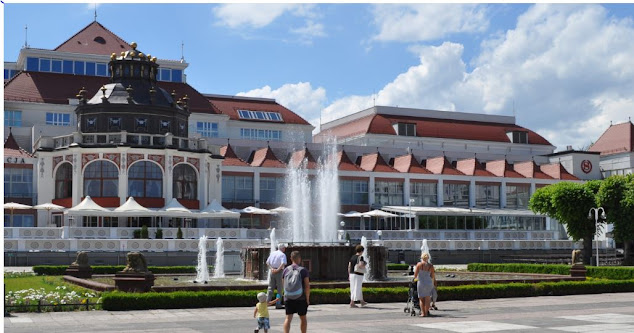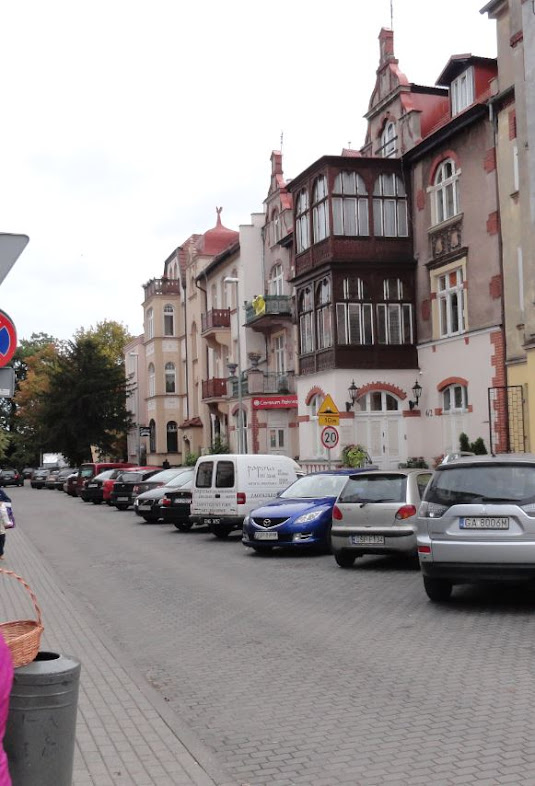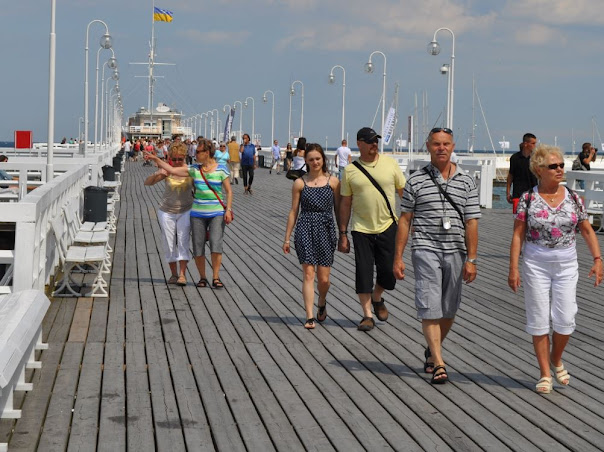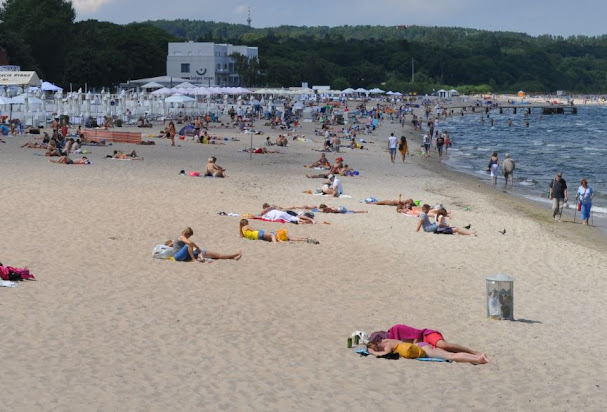Sopot
A special atmosphere
Sopot is an independent town squeezed in between Gdynia and Gdansk. The boundary between the towns is imperceptible though, unless you are aware of a small road sign indicating that you are now in Sopot.
Sopot is first mentioned in a document from 1283, where it is referred to as a fishing hamlet. In the middle ages the village used to belong to the nearby Cistercian monastery in Oliwa. After the first partition of Poland in 1772, Sopot was incorporated into Prussia.
Already from the 16th century, the town was known as a summer residence and seaside resort, and from 1823, the French physician Jean Georg Haffner arrived in Sopot in the wake of the Napoleonic wars. He started to develop Sopot with public baths, a health resort and a pier. At the same time, holiday hotels emerged.
The railway came to Sopot in 1870, and tourism caused a rapid development; in 1901 it was granted a municipal charter.
After the end of WWII, Sopot was incorporated into the free town of Gdansk. The town continued flourishing, among other things with the opening of the luxury hotel “Grand” in 1927 and the erection of a pier in the size XXXL the same year. In 1945 Sopot became a part of Poland and throughout the communist era it continued to play an important role as a tourist centre.
The German connection
For years Sopot has been closely connected with the mainly German Gdansk and tourism has been dominated by wealthy German people something that becomes evident when you look at the buildings in Sopot. The town came more or less intact out of WWII, and the descendants of the pre-war population still live in Sopot, though most of the inhabitants are newcomers. The German past is unmistakable though when you walk through the town, especially in the architecture, where old houses and villas stand as clear exhibits of German cultural heritage.

Sopot – in front of the pier
The university
What makes Sopot special is that it is a real living town and not just a holiday centre. There are a lot of residential areas here for people working all over 3-city and the town has its share of students, giving it an atmosphere where tourists and party-people from Gdynia and Gdansk mix with resident students. The Gdansk University has a large department of administration and economy, and also other institutions of higher education are present in Sopot. It is also worth noticing the Sopot School of Polish for foreigners, which in the 1990s was considered one of the leading centres in Poland for westerners wanting to learn Polish.
Theatres and festivals
Sopot is the home of quite a few excellent theatres, but obviously the performances are in Polish, and mostly they are booked a long time in advance. Some of the performances are experimental, and sometimes they go live at the beach. In addition we will find several big music events, among others the forest opera and live arrangements at the many bars.
The most well known festival is probably the Sopot song festival, which takes place in the forest opera, and which has been taking place since 1962. Here we can watch huge, classical productions, performed by Polish as well as international top names, but also several radio and TV channels organize regular events in Sopot.
The racecourse
The racecourse in Sopot had its days of glory in the interwar period, when the town belonged to Gdansk. The racecourse is now owned by the city, and it is regularly used for racing as well as jumping competitions.
Sopot town
The central areas in Sopot have been developing extremely quickly during the past decade, but most of the town remains unchanged when it comes to elegance and atmosphere, elements bearing witness of another epoch. Many of the villas have been changed into boarding houses and even more people rent out rooms on short terms, while new restaurants and cafés seem to appear everywhere, and the quality clearly indicates that even though this is a tourist town, most of them make a living on the reputation and returning guests.
Architecture
Architectonically Sopot differs from the neighbouring cities of Gdynia, having a rather modernistic style, and Gdansk, mainly erected in a gothic-baroque style. The residential areas in Sopot consist mainly of classical houses, built in a combination of bricks and wood, and you may also see them in extra large versions. In the beginning of the 20th century, the architecture is influenced by historical romanticism, where the building materials remain unchanged but where the houses grow considerably, and at the same time a lot of ornamentations are added as well as projections and huge terraces; especially huge verandas in the alpine style were a must on the buildings around 1900, but the style is often an imitation in later buildings as well as modern blocks of flats. When you get away from the centre in Sopot, the town is relatively peaceful, and it is an architectonical thrill to take a walk round the roads in the residential areas while looking at the diversity of the buildings. At the main road on the promenade the houses in some places have the size of small palaces, and these buildings will often house hotels or boarding houses.

A house in Sopot, with the typical veranda/ winter garden
The pier
The over-half-a-kilometre-long wooden pier has become the symbol of Sopot to such a degree that it has been given the name of the greatest of all Poles, namely the late Pope John Paul II. Normally it is just called the pier (molo), though, but in Poland there is a preference for naming parks, schools and other important buildings after Poland’s great sons (and now also daughters). People around Sopot will claim that this is the biggest pier in Europe or even in the whole world, and as a matter of fact it is the longest wooden pier in Europe, at the same time appearing to be wide and solid.

The first pier was built in 1827 and had the length of just 32 metres, but as early as in 1910 it was lengthened up to 310 metres. The present form and length was given in 1928.
The pier is a must when you are in Sopot, this is where you meet people, where you fall in love with the town. In front of the pier you will find a huge recreational open space, whereas the actual pier has become so popular that the town started to charge an entrance fee in the summer season (7 zloty for adults, half the price for children). Some people are slightly put off by having to pay for a walk, but the system actually limits the number of people to such a degree that it is possible to do the trip without suffocating because of the huge number of visitors. The open space in front of the pier is a perfect play area, including bikes for children, benches and a small lighthouse with a copper roof from the 20th century.
First of all you get a terrific view towards the mainland, where you have a clear view to the beach on both sides. In the direction of Gdansk you can see all the way to Nowy Port and Westerplatte, whereas in the direction of Gdynia you can see Orlowo and the cliff standing out in the bay. Far away in the bay you can catch a glimpse of the peninsula Hel, and on the water, lively traffic with pleasure crafts, water sport equipment, huge cargo vessels and ferries.
The remotest part of the pier is a host to a small marina with a varied choice of ships, from small yawls to huge yachts. The urge to get out on the sea may be fulfilled along the pier, where motorboats take passengers on short but hazardous trips. Next to the marina there is of course a nice restaurant and a possibility to take a look around through a marine telescope.
All year round the pier is used for different kinds of arrangements, like performances, music groups or food festivals.
Monte Cassino
Monte Cassino Street is the high street in Sopot, this is where it all happens. The pedestrian street has taken its name from an Italian mountain where in 1944 a Polish corps fought side by side with the allied troops in a battle against German soldiers. The full name of the street is the Heroes of Monte Cassino Street but it is usually referred to as “Monciak” by the locals.
Monte Cassino starts more or less where the pier area ends. It starts with a huge square surrounded by modern hotels and shopping areas having replaced the wooden stalls that use to be a landmark of the square until just a few years ago.
The street slopes slightly upwards and leads to the local train station and Aleja Niepodleglosci (Independence Avenue). On the street you will mainly see traditional Sopot houses, but there are also some odd modern slightly boring buildings, as well as a few modern architectonical gems, among them Krzywy Domek (the little crooked house), an office and a shopping complex with a surrealistic shape and interior, erected in 2004 by the architects Szotynski and Zaleski.
Monte Cassino presents you with a variety of styles and shops, but everything is at very or reasonably payable prices. A lot of what’s offered is designed for families, i.e. booths with delicious ice cream, Dutch waffles, pizza restaurants and a street theatre, but you will also find pavement cafes, a few hip music clubs and a night club with naughty girls. At the top of the street, artists are carving wood and making caricatures, and here and there you will find all different kinds of shops.
The hottest atmosphere is from May to December, but there is certain activity all year round, and actually it might be more pleasant in spring and in autumn, when you may be able to enjoy the area without bumping against your fellow tourists all the time.
The side streets
If you turn away from Monciak in the direction of the side streets, you will initially encounter small cafes and wine bars, run with heart by people who have fulfilled their dream about a small business in Sopot. You can also find good restaurants, a few shops and a number of clubs for locals, but in general the streets are extremely peaceful, the atmosphere reflected by the old houses and the slightly wild, but still well-kept, gardens.
Aleja Niepodleglosci and Sopot on the other side of the main road
When you walk past the railway through a small viaduct, you find yourself on Aleja Niepodleglosci (Independence Avenue). Aleja Niepodleglosci is a solid connecting road between Gdansk, Sopot and Gdynia and at this place the town begins to look slightly more like a normal town, still with a specific atmosphere but with less noise and party (unless you happen to meet someone on their way home). On Aleja Niepodleglosci you find schools, different institutions and blocks of flats and the residential area on the other side of the street, where older residential dwellings and the residents together form a very special atmosphere. A bit further up – in Upper Sopot – you find old villas making a true impression, not only because of their gigantic size, but also the details of the construction and the rustic building materials. There are also a few apartment blocks erected in that same style, and everything is surrounded by forest and wild nature on both sides.
A walk along the beach promenade
Along the beach you find walking paths as well as a biking road, on both sides filled up with beach bars, deck chairs and small hotels. The food is normally good and cheap, but the beach promenade in Sopot is at certain stretches just good, especially at the peak of the season, where the prices normally go up.
The beach and the water is obviously the most important for sporting activities in Sopot. There are several clubs dedicated to different kinds of water sports, and they are located along the beach, by the pier and in different places in town – but the route along the beach is the most popular area for these kind of clubs.

Beach
In the summer time it’s often jam packed here, and it is one of the few times in my life when I have seen a biking path with speed limits – 10 km/ hour; then it’s kind of made clear that you are not biking to become a pro biker, at least not along the beach in Sopot where the local Police, in spite of their friendliness towards tourists, can be rather hard. Remember that the local judge has a tendency to be rather harsh on people biking under the influence of alcohol.
Please send an email to m@hardenfelt.pl if you would like an English-speaking tour guide to show you the most important places in Warsaw.
